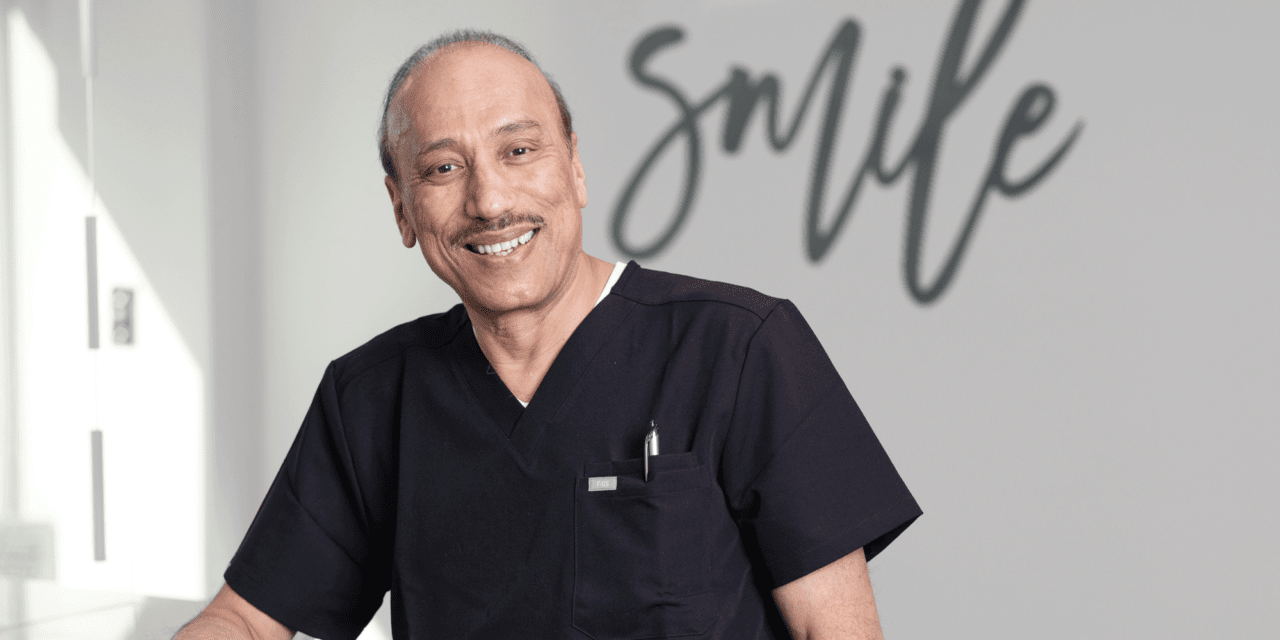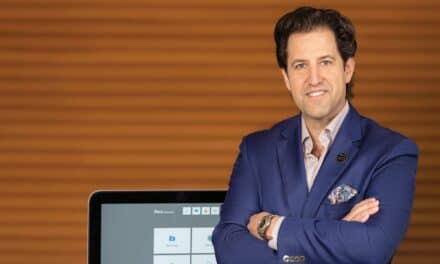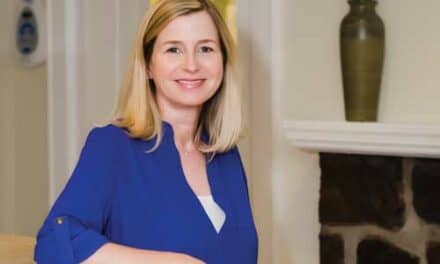For Suresh Ramaswamy, DDS, these three elements are the key to building and maintaining a successful orthodontic practice and making the right product choices.
By Greg Thompson | Photography by John O’Boyle
Suresh Ramaswamy, DDS, believes in the art, science, and business of orthodontics. All three elements work well together at his office in New City, NY, a 2,500-sq-ft space with five chairs, seven staff members, and a 25-year history of fashioning smiles in the Empire state. The practice is close to the bright lights of Manhattan, but far enough to maintain a small town feel.
Ramaswamy estimates that just about 10,000 patients have come through the doors of his “high volume” practice, and those patients paid reasonable rates. “I’m not the most expensive orthodontist,” he reveals, “and while I do work at high volume, I do not sacrifice quality or the health of the business.”
In the art, science, and business equation, profitability is a key component. One way he makes that a reality is through the prudent choice of equipment. For Ramaswamy’s part, he is not overly impressed with heavily marketed brand names, choosing instead to focus on results.
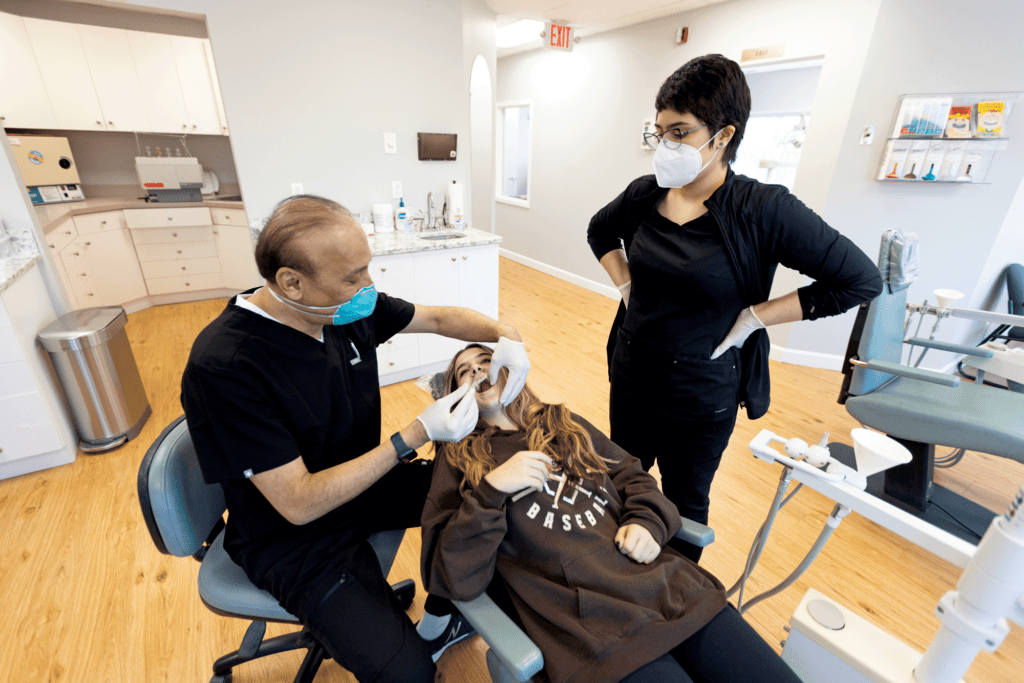
Brand Loyalty
Twenty-five years ago, he met with representatives from TP Orthodontics of La Porte, Ind, and the relationship has remained intact. “TPO’s NU-EDGe Cobalt Chromium Brackets are excellent, but they’re not the most expensive,” Ramaswamy says. “The cost factor is huge, and keeping costs down and increasing profit margins should be every orthodontist’s goal.
“For example, a TPO bracket might be considerably lower in price than other brands,” he continues. “Why spend the extra per bracket when TPO performs exactly like the others? In my experience, TPO brackets do the same thing as the most expensive brackets.”
TPO Brackets are nickel-free with vertical slots that allow for the easy addition of auxiliaries. “There is a certain distance between the bracket base and the wings of the brackets,” Ramaswamy says. “The ability to easily place torqueing auxiliaries to move roots, for example, provides better results.”
Over the last quarter century, manufacturer representatives from competing companies have made pitches, but Ramaswamy remains loyal to TPO primarily due to the company’s consistency, quality, and efficiency. “I am always in shock at the quality and durability of the ClearVu Brackets,” he enthuses. “I have not seen another bracket that blends so evenly with the teeth. Every time a patient comes back with them, they are never stained. ClearVu brackets function the same as metal brackets. They are a great option that will boost the confidence of many individuals who do not like the look of metal braces.”
As a ceramic bracket, ClearVu Aesthetic Brackets deliver a base technology that provides a reliable bond and a safe, comfortable debond. The base’s patented polymer mesh design closely replicates a metal base, while the polymer material provides a protective barrier between the ceramic bracket and the enamel during the entire course of treatment.
Since the base flexes during debonding, the bracket comes off cleanly without the need to fracture the bracket or use special tools. According to Ramaswamy, ClearVu also provides Personalized Color-Matching Technology that makes it possible to offer brackets that are suitable for all patients, especially those who request, but don’t qualify for aligner treatment.
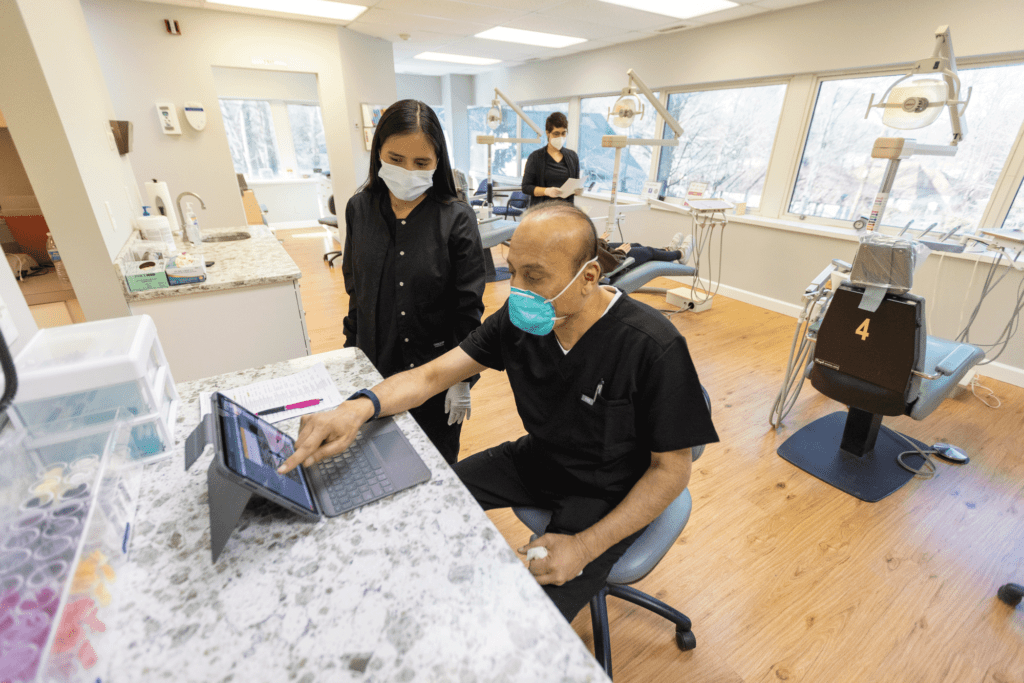
A Time to Wait-and-See and a Time to Jump on the Bandwagon
When it comes to other pieces of office technology, Ramaswamy has more of a wait-and-see philosophy. He’s not the first, but not the last to lay out occasionally nerve-wracking capital expenditures. During the scientific and technological paradigm shifts of the last 25 years, Ramaswamy counts digital x-rays, scanners, cloud-based software, and aligners as familiar game-changers that have revolutionized the profession. Along with sound business practices, science and evidence drive the practice to improve patient outcomes and overall efficiency.
“Cloud-based software is one of those game-changers that is incredible, because before I would spend so much money on computers for hard drives, upgrading, and servers,” he says. “Aligners of course changed the game completely, and I’m glad I jumped on the bandwagon.”
While the bandwagon has traveled the length of the profession, Ramaswamy is keenly aware of aligners’ limitations and the benefits. In deciding between aligners and brackets, he maintains that “case selection is the most important thing” and ultimately aligners “can’t do everything that wires and brackets can do.”
“There are only a certain number of cases that qualify for aligners in my opinion,” he explains. “You can’t have indefinite aligners. You must keep changing every 2 weeks. In many cases, you’re looking at roughly 10 months. In a difficult case, patients may have 60 aligners and patients get tired. There is aligner fatigue. They say, ‘I’m tired of this. I know you’re trying to achieve perfection, but can we just finish this?’ The marketing tends to be glamorous, but you need a certain kind of personality to wear them.”
Ramaswamy’s highly capable and energetic staff helps to drive compliance and motivation, but often the most challenging part of the job is meeting expectations. Sometimes those expectations are unrealistic, particularly when compliance suffers. “We try our best to get the best smile,” Ramaswamy admits, “but sometimes there are outside factors that can contribute to it not being perfect.”
With roughly 30% adults and 70% pediatric cases as the patient base, requests for aligners vary across the demographics, with increasingly more teenagers asking for aligners. Just 35 minutes from the heart of New York City, a certain subset wants the perceived “in fashion” modality. Still, compliance will always be a concern and Ramaswamy is confident that “brackets and wires are here to stay as long as we are dependent on compliance, and aligners are totally dependent on patient compliance.”
Whether patients are wearing aligners or brackets, the motivation remains the same, as does the inherent satisfaction that drives the profession. Ramaswamy puts it this way: “I decided to become an orthodontist because I really wanted to help people. Every day I get to help people and create beautiful smiles. Some patients come in because they’re being made fun of at school, or some because their parents say that they won’t smile in family photos. Some want to have straight teeth for upcoming milestones. I can help them instill more confidence within themselves. It’s a very rewarding feeling. I get to see patients grow up, hear about accomplishments, and they become more than just my patients—they are like family.”
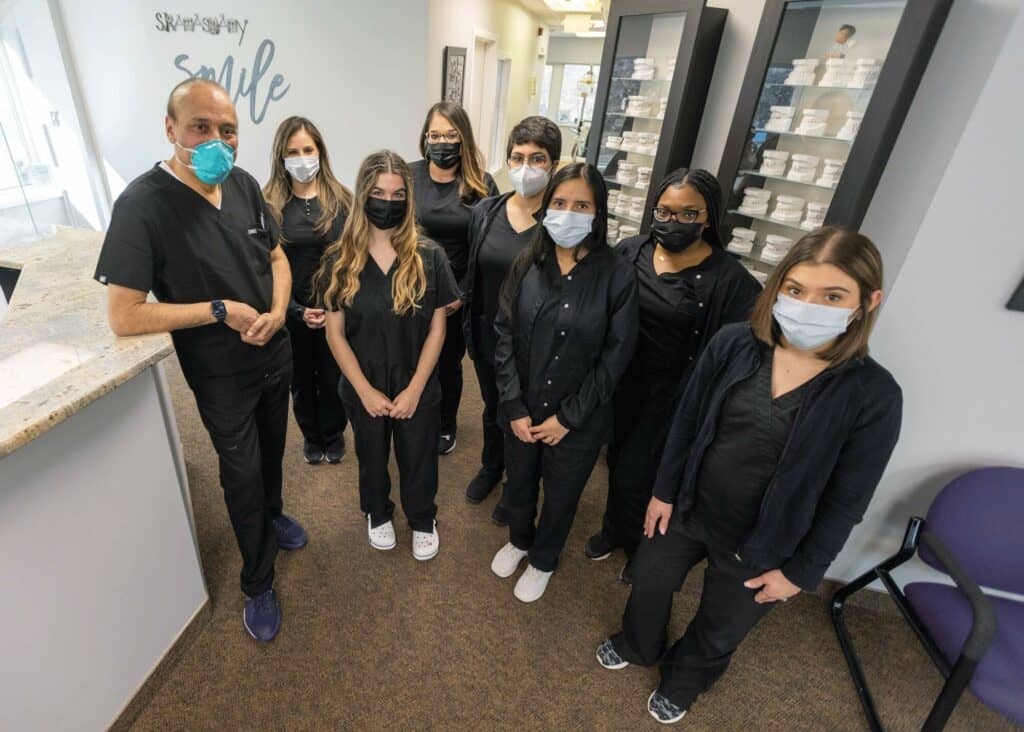
An Immigrant Story
Born in Mumbai on the western coast of India, Ramaswamy spoke English during all his formative schooling, but he is well-versed in Hindi—the dominant language of India. He can also readily converse in Marathi and Tamil.
Following an older brother who had migrated to New York around 1975, Ramaswamy arrived in the Big Apple in the early 1980s to pursue his American dream. Growing up in the 8th most populous city in the world (Mumbai) helped prepare the budding orthodontist for the chaos of New York City. In these early days, he worked at a gas station counter and took on various newspaper delivery routes to help make his dream a reality.
With a fierce work ethic that also encompassed an extended stint as a laboratory technician, Ramaswamy eventually earned his dental degree at New York University and his orthodontic credentials at Fairleigh Dickinson University in Teaneck, NJ. “I had a mentor named Stan Morris, DMD,” Ramaswamy remembers. “He was an orthodontist who took me under his wing after I met him at orthodontic school. I used to make all the appliances for him in his office while I was going through school. He is still practicing in New Jersey, and I am grateful for his advice.”
At an early age, it was important to Ramaswamy’s parents that he become “something within the medical field.” The original goal was to be a physician, but an interest in the dental world led to a different path and eventually orthodontics. And yes, the parents were “very pleased.” Ramaswamy reveals that his own children are following the same road with his daughter currently in orthodontic school and his son set to graduate from dental school. Ramaswamy lived (and still does) in the same town where he practiced with his own children attending school in the district.
People know his name in New City, which he describes as a “small and safe” town, and a “great place to practice orthodontics.” If families run into personal troubles, compassion is the response with fees either waived or heavily discounted.
These days, the left-handed Ramaswamy plays indoor tennis two or three times a week when he’s not working. Sporting a one-handed backhand like his idol Roger Federer, Ramaswamy makes the annual pilgrimage to the U.S. Open in Queens where he has seen some of the best players on the planet for the past two decades.
“We can use a tennis analogy with orthodontics, particularly in comparison to the effortless style of Roger Federer,” Ramaswamy muses. “Some orthodontists tend to overthink a case and make it more difficult than it has to be. Others make it look so easy. Federer makes it look so easy. His motions are so smooth. He loves the game. I would probably say that I like orthodontics because it comes fairly easy to me. I don’t find it tedious or difficult, but instead find it rewarding when I’m able to truly help patients.” OP
Greg Thompson is a freelance writer for Orthodontic Products.

